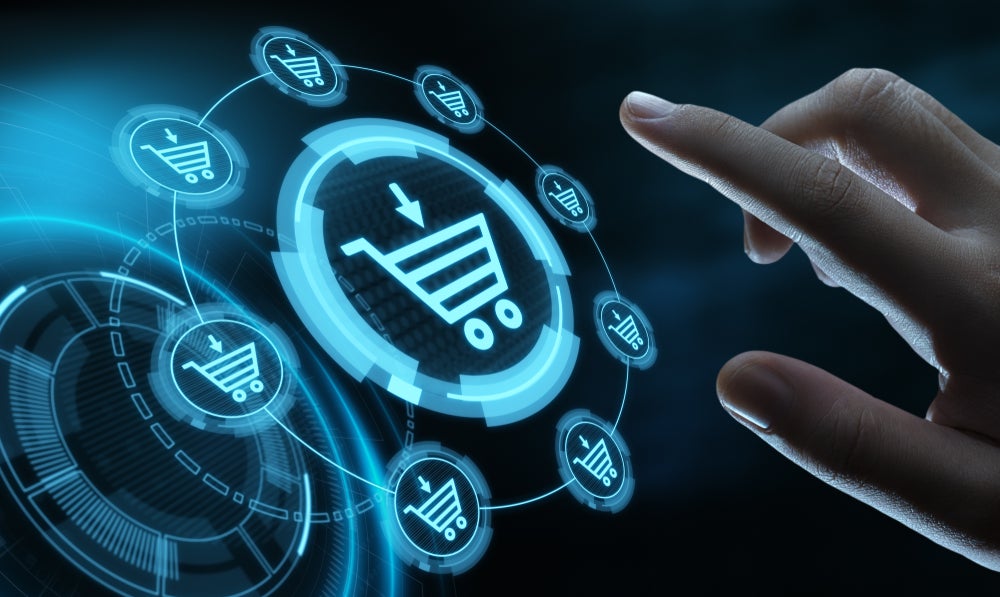The merger of content and e-commerce is gaining traction in the US market as brands and retailers increasingly embrace shoppable advertising.
Advertisements with embedded tags steering users online to a product’s page, where the product can be purchased digitally, are already common on social media, instant messaging services, e-commerce sites, and some pay-TV and international streaming platforms. Now, they are increasingly populating US TV channels and video streaming services, bringing a new level of interactivity to a formerly passive viewing experience.
Fans fancy football with shoppable ads
Prior to the arrival of the crypto winter, the Super Bowl broadcast in February 2022 on the NBC network included a commercial featuring a colorful bouncing QR code that could be scanned to take viewers to Coinbase’s promotional website via a second screen like a smartphone or tablet. There, free Bitcoin was being offered to new customers and a sweepstakes was promoted. The viral hit quickly overwhelmed Coinbase’s servers, but the experience proved that US viewers were ready to interact directly with televised advertising.
Less than two years later, Amazon Prime Video’s Black Friday NFL game in November 2023 doubled down on that precedent by merging QR code-based shoppable video advertising for various brands along with live second-screen access to Amazon’s own virtual storefront and payment platform. The streaming broadcast included a slate of targeted, interactive, shoppable video ads with scannable QR codes for a second-screen experience that was integrated within the primary stream. Many ads were accompanied by QR codes for exclusive Amazon-only retail offers that were revealed during the game’s airing.
This endeavour was all about e-commerce, including selling targeted commercials and enabling customers to browse, discover, and purchase relevant products from within Amazon’s owned ecosystem in real time. Amazon lured people to sign up for basic free memberships just to view the game, and it clearly hopes most will stick around to continue shopping on its retail storefront. Furthermore, opening game viewing to non-Prime members gave Amazon an opportunity to upsell them to a Prime subscription.
QR codes for some, but not all
Netflix has also announced that in early 2024 it will enable marketers to showcase QR codes in commercials they run on Netflix within the US. Nonetheless, this second-screen paradigm is not the only shoppable ad approach, as alternative platforms that support navigation via TV remotes offer actual on-TV partner purchase options. Combining TV remote navigation with a link to a platform that has a built-in payment mechanism preloaded with a user’s payment information offers a particularly seamless purchase process.
How well do you really know your competitors?
Access the most comprehensive Company Profiles on the market, powered by GlobalData. Save hours of research. Gain competitive edge.

Thank you!
Your download email will arrive shortly
Not ready to buy yet? Download a free sample
We are confident about the unique quality of our Company Profiles. However, we want you to make the most beneficial decision for your business, so we offer a free sample that you can download by submitting the below form
By GlobalDataFor example, in 2022, Roku and Walmart partnered to enable streaming content viewers to purchase featured products from Walmart directly on Roku by using their remote controls to navigate a shoppable ad overlay on the TV screen and pay using Roku’s payment platform, Roku Pay, which had their pre-populated payment details. While QR codes can be used in most any streaming video advertising service, connected TVs and smart TVs are key to enabling in-app or in-ad purchases on the largest screen in the house minus the need for a second screen, which creates less shopper friction.
Whether QR codes are used or not, the ability for brands to target viewers with product offers that are relevant and immediately actionable ensures the TV and video shoppable ad trend currently gaining traction in the US market will continue to grow.








Related Company Profiles
Walmart Inc
Amazon.com Inc
Netflix Inc
Coinbase Global Inc
Roku Inc